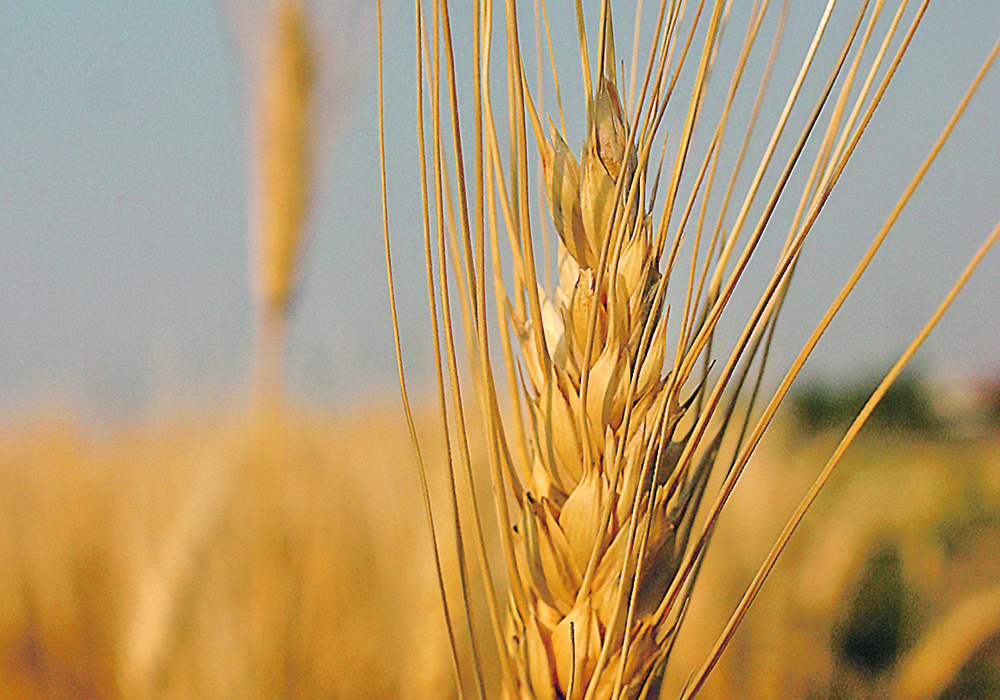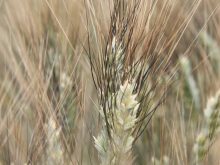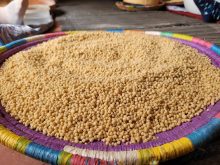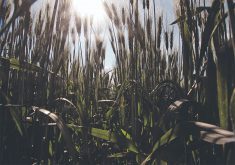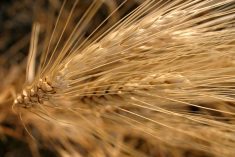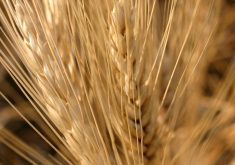SWIFT CURRENT, Sask. — Durum wheat produced in Western Canada continues to have a solid reputation among semolina millers, pasta makers and consumers in Europe.
But maintaining that reputation will take additional care and vigilance as Europe moves toward tighter food safety regulations related to vomitoxin levels and pesticide residues, said an industry leader from Spain.
Jaume Mas, president of the Union of Semolina Associations of the EU (Spain), said Canada is the largest and most important supplier of top-quality durum to the European Union.
“Canadian durum has done a great job in terms of protein quality, (protein) quantity … gluten quantity, and quality of the gluten also, (and) yellowness,” said Mas, a guest speaker at Durum Summit 2023, held Feb. 1 in Swift Current, Sask.
“These are characteristics which are really greatly appreciated by the European miller and by the European end consumer….”
But there are challenges the Canadian durum industry should be aware of, he added.
“In the coming years, there will be some new regulations concerning DON (deoxynivalenol),” Mas said.
“(Allowable) vomitoxin levels (in imported durum) will go down as of July 1, 2024, so definitely that will be a challenge in (some) years….”
Glyphosate residues in durum imported into the EU could also come under greater scrutiny, he said.
Glyphosate use is still allowed in Europe but the product’s future status is unclear, Mas told Canadian durum growers.
“The glyphosate issue is still quite an issue,” he said in a subsequent interview with The Western Producer.
“In Europe, we are renewing the internal use of glyphosate on a yearly basis only, while normally it should be five- or 10-year renewals. And, at some point it, might be banned.”
“If banned, I would guess then that the imports (of durum) should be also glyphosate free.”
The most likely outcome in that scenario is a new maximum residue limit that allows glyphosate residues at extremely low detection levels, as opposed to a zero-tolerance policy.
“If banned, we expect that there should be a minimum threshold…,” he said.
Because detection technologies are so precise, an EU policy that rejects imports containing any level of glyphosate residue would be unworkable and would “put us in strong difficulty.”
According to Mas, heightened regulations aimed at reducing vomitoxin levels in imported durum are already assured and could have a disruptive impact on Canada’s export program, particularly in years where fusarium head blight is a common production problem in Canada’s top durum-producing regions.
Europe’s new regulations will set the maximum residue level for DON in durum at 1.5 parts per million, down from 1.75 p.p.m.

The limits would also be applied to processed durum products, including milled semolina and pasta.
While the reduction might seem small on paper, Mas suggested that European importers will likely use commercial terms to source durum that has DON levels even lower than 1.5 ppm.
“A European buyer doesn’t really want to buy a cargo (of Canadian durum) at a 1.5 p.p.m. average because if (any) sample (from that cargo) exceeds 1.5, then that entire cargo would be downgraded to feed,” Mas said.
“As a European buyer, if this 1.5 p.p.m. level goes into force, I’ll probably buy a maximum of 1.1 or 1.2 p.p.m. on the composite because I don’t want that any single sampling … upon arrival is giving a higher value than 1.5.”
Blending to reduce DON levels is not an option for European processors, he said.
In Canada, durum breeders are working to develop new Canadian Western Amber Durum varieties that are less susceptible to fusarium head blight, the disease that produces DON.
But progress has been slow because there is no single gene in the durum genome that bestows resistance to the disease.
Instead, there are many genes that provide small degrees of resistance.
Plant breeders are identifying these genes and are hoping they can be stacked in new cultivars that offer enhanced resistance.
Recently, Canada registered its first durum variety with an intermediate or “I” rating for fusarium head blight resistance.
AAC Schrader, developed by Agriculture Canada durum breeder Yuefeng Ruan, will be distributed by FP Genetics.
It is expected to be available to commercial growers in 2024.
Mas said a ban on glyphosate in Europe would likely result in a new MRL that could place further restrictions on Canadian exports.
If that happens, it will be important to ensure that glyphosate use in Canada conforms to label recommendations. Pre-harvest applications would carry a huge and potentially costly risk.
Mas said there is also growing concern among European durum buyers over the use of plant growth regulators and ergot levels in durum.
On the positive side of the ledger, Mas said Canadian durum will continue to play an important role in supplying durum to European millers and pasta makers.
Europe’s durum processing industry, which consists of about 180 mills, typically processes about 8.5 million tonnes of durum annually, and produces roughly 5.7 million tonnes of semolina.
Italian processors alone account for roughly two-thirds of annual European semolina output.
However, durum production in the EU is declining and production there is insufficient to cover the needs of the industry.
Mas said Europe is facing an ongoing “structural deficit” that will make imports of top-quality durum from non-EU nations indispensible.
This year, durum plantings in the EU are projected to decrease by about two percent and financial incentives for durum production are generally inadequate to encourage additional acres.
Agricultural reforms in Europe are also expected to result in a significant reduction in direct government supports to EU growers, a situation that should bode well for Canadian durum exports.
“We have structural need of about two million tonnes (per year)… and it will stay like this so Canadian wheat definitely has a role in our purchasing strategy and has a quality that we appreciate for out blending strategies as well.”
Over the past decade, European millers have imported, on average, about two million tonnes of durum per year.
Between Aug.1, 2012, and Aug. 1, 2022, Canada’s annual exports to Europe amounted to nearly 1.2 million tonnes per crop year.
That easily makes Canada the top supplier of durum to Europe, said Mas.
Between 2017 and 2022, Canadian durum accounted for nearly 54 percent of all EU durum imports, followed by the United States (19 percent), Kazakhstan (9.3 percent), Australia (8.3 percent) and Russia (4.6 percent).
Mas said Canada is positioned to maintain its spot as the top EU supplier, but he encouraged Canadian growers to be mindful of the values held by European consumers.
In Europe, consumer concerns over environmental stewardship and sustainable production practices are front and centre, he said.
The Canadian durum industry has a positive story to tell, Mas suggested.
The Canadian industry should “better explain the water and carbon footprints of CWAD and involvement in initiatives like CRSC (the Canadian Roundtable for Sustainable Crops),” Mas said.
“Provide customers with information on how (Canada’s) cereals value chain is meeting the goals of sustainability.”


